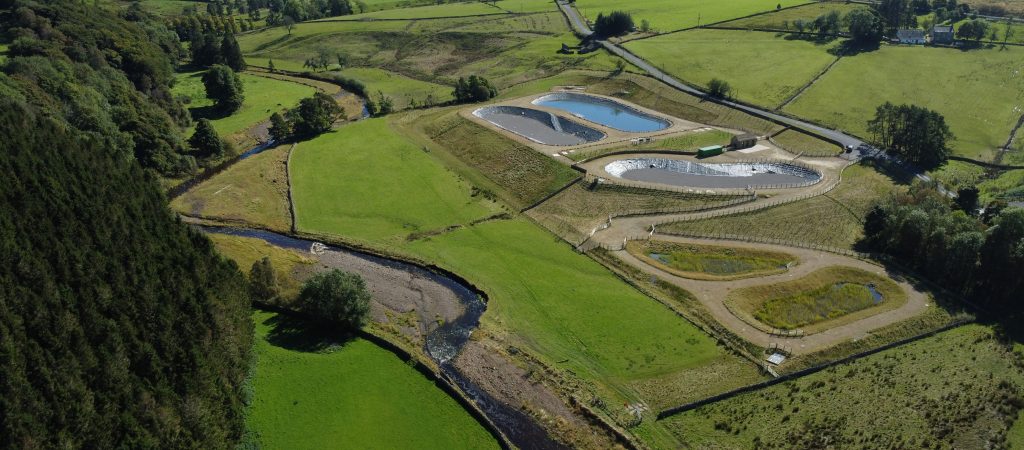
What will we do?
Where possible, the WAMM Programme prefers to use “passive” technologies which do not require continual supervision by people and have minimal input of chemicals or energy since these systems tend to have the lowest whole lifecycle costs. The design of the treatment schemes is determined by the concentrations of metals and how much mine water needs to be treated.
The proposed treatment scheme will include at least one treatment pond in which the metals are removed by encouraging naturally occurring geochemical, microbiological and ecological processes to occur within natural materials placed in the base of lined treatment ponds. Some of the sulphate present in the mine water is converted into dissolved sulphide which binds to the metals to form solids that are retained in the treatment layer. We expect that up to 90% of the metals will be removed by the treatment scheme.
The diagram below represents the mine water treatment scheme at Nent Haggs; the treatment scheme model may change slightly for Barney Craig as the design develops to treat the mine water. The photograph at the top of this page offers a visual overview of the constructed layout of the Nent Haggs mine water treatment scheme.

Mine water transfer: we will capture all of the mine water at the Barney Craig level, take it to the treatment scheme, and then return it to the River West Allen after the metals have been removed.
Treatment scheme:
Stage One: Treatment pond
This open-water pond is where most of the metal pollution will be removed from the mine water. It will contain a layer of natural organic material like woodchips, straw and limestone gravel in which naturally occurring bacterial reactions will encourage the capture of metals. The mine water flows downwards through the layer and out of the base in pipes.
It is possible that small amounts of hydrogen sulphide gas could be generated as a by-produce of the bacterial reactions and held within the water leaving the base of the pond. We will carry out an odour modelling assessment and if necessary, the design will include odour control systems to prevent the scheme causing any nuisance odours.
Stage Two: Wetland area
The treated water may then pass through a wetland area containing reeds which will help to remove any residual sediments before the water is discharged back into the River West Allen. However, the wetland area may not be included in the detailed design as there are also other options to make best use of the available land and enhance biodiversity.